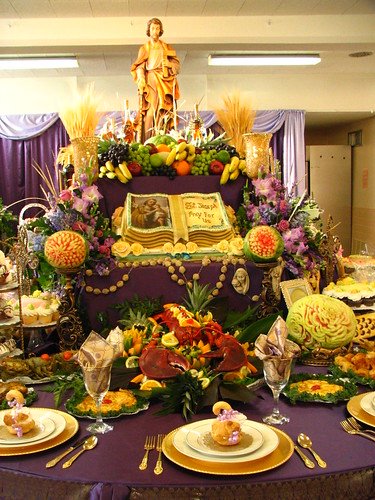 |
| Flickr/kevmac_77 |
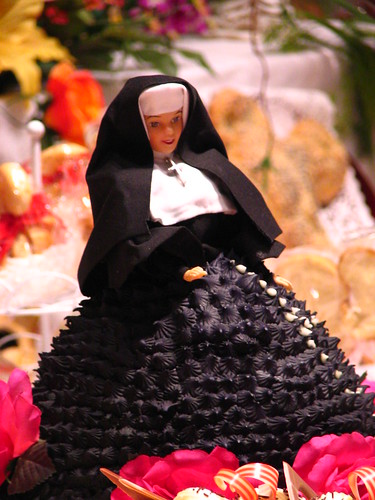 |
| Flickr/kevmac_77 |
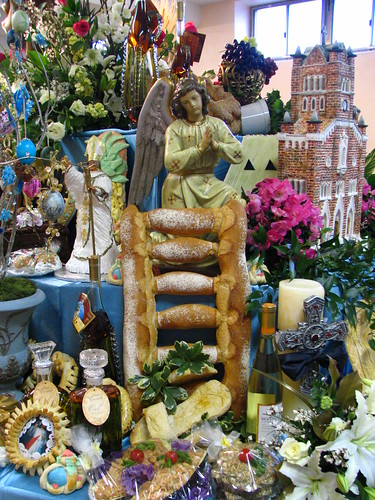 |
| Flickr/kevmac_77 |
It seems just about everybody celebrates St. Patrick's Day, on March 17, and Italian-Americans and their fellow church parishioners across the country celebrate with the Sicilian tradition of setting up a St. Joseph's Table on the 19th, which can last several days and through the weekend.
Desserts, breads and sometimes other foods like wine, olive oil, fish, spaghetti dinners, etc. get set up in the parish hall just outside the church, and all are welcome.
Originally all the food would be given to the poor after the celebration. Sometimes churches will either auction or sell the baked goods and give proceeds to the poor or fund the church's programs for the poor.
The tradition comes from Medieval times when Sicilians prayed to St. Joseph to bring them rain and prevent famine. Prayers were answered, the rain came and the fava bean crops prospered. Sicilians have thanked St. Joseph with table or altar offerings ever since.
Desserts and breads are particularly popular for the offerings showing the bounty of wheat and fruit crops, bread crumbs represent Joseph's wood shavings since he was a carpenter, and because St. Joseph is the patron saint of pastry chefs. You'll often see the tables set with three tiers to represent the Holy Trinity.
One specific pastry associated with the Feast of St. Joseph is the Zappola (pl. Zappole). It is round and made out of cream puff pastry, the same pastry as an eclair. It is filled with custard and topped with a cherry. In Rome, it is called Bignè di San Giuseppe where it is more like a beignet or doughnut.
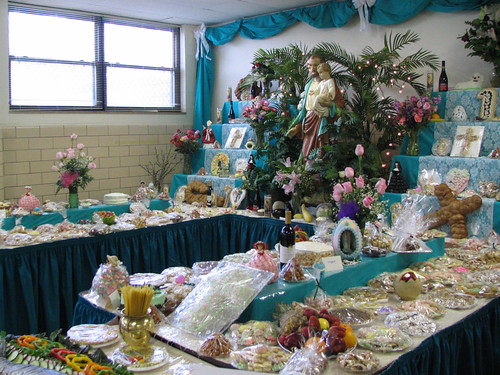 |
| Flickr/kevmac_77 |
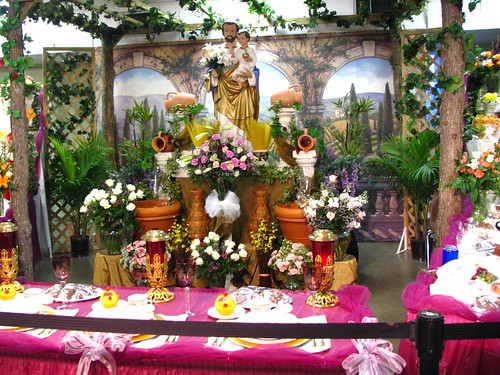 |
| Flickr/kevmac_77 |
 |
| Flickr/kevmac_77 |
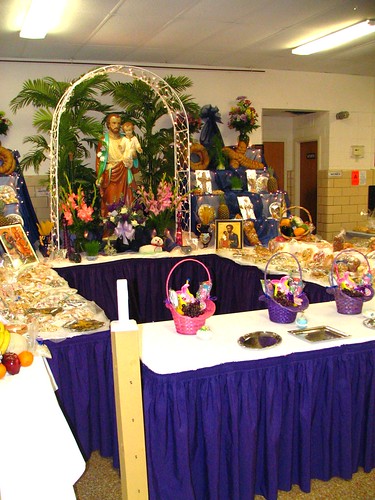 |
| Flickr/kevmac_77 |
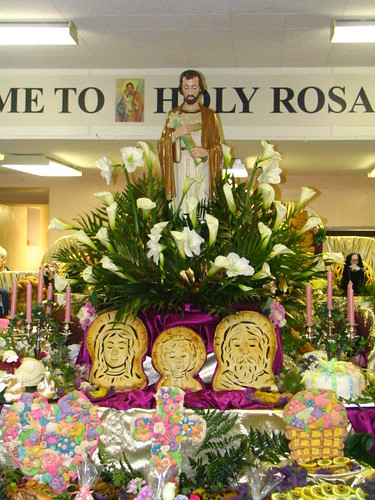 |
| Flickr/kevmac_77 |
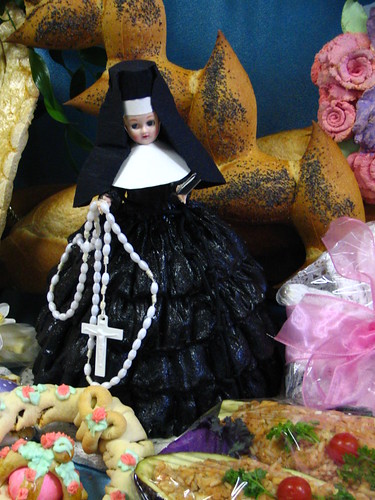 |
| Flickr/kevmac_77 |
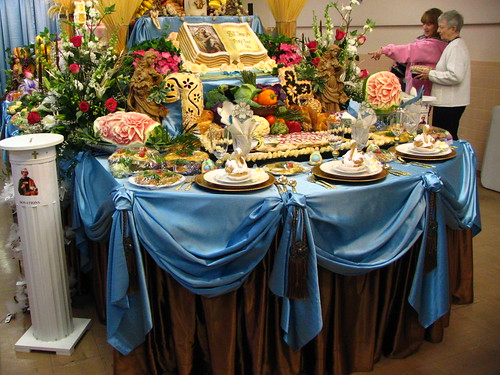 |
| Flickr/kevmac_77 |
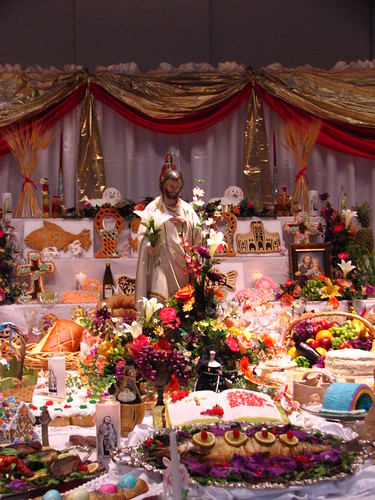 |
| Flickr/kevmac_77 |
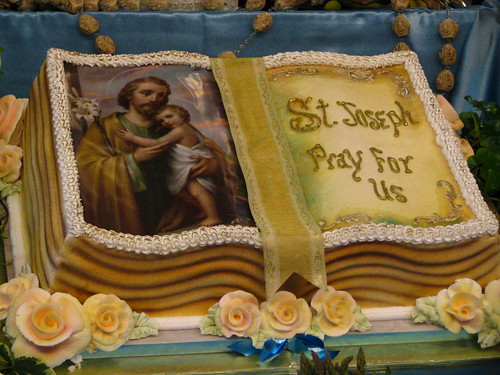 |
| Flickr/kevmac_77 |
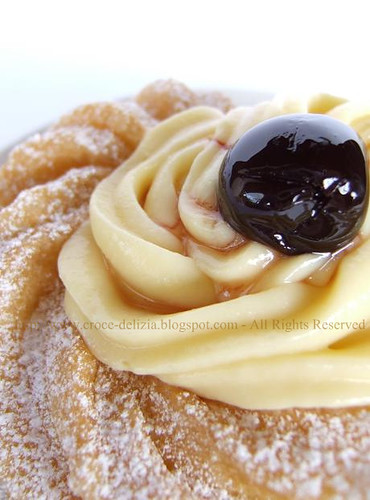 |
Flickr/Antonella F.
One specific pastry associated with the Feast of St. Joseph
is the Zappola (pl. Zappole). It is round and made out of cream puff
pastry, the same pastry as an eclair. It is filled with custard and topped
with a cherry. In Rome, it is called Bignè di San Giuseppe where it is
more like a beignet or doughnut. |














No comments:
Post a Comment
Let's build a friendly community. Thank you for leaving a comment. :-)